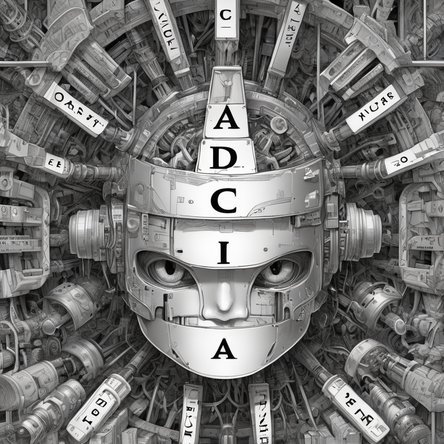CAPTCHA का हिंदी में अर्थ
CAPTCHA एक ऐसी तकनीक है जिसे कंप्यूटर और मनुष्यों के बीच अंतर करने के लिए विकसित किया गया है। यह तकनीक वेबसाइटों और ऑनलाइन सेवाओं में उपयोग की जाती है ताकि स्वचालित बॉट्स से सुरक्षा सुनिश्चित की जा सके। CAPTCHA का पूरा नाम "Completely Automated Public Turing test to tell Computers and Humans Apart" है। हिंदी में, इसे "पूरी तरह स्वचालित सार्वजनिक ट्यूरिंग परीक्षण जो कंप्यूटरों और मनुष्यों के बीच अंतर बताता है" कहा जा सकता है।
CAPTCHA का महत्व
इंटरनेट के विकास के साथ ही ऑनलाइन सेवाओं और वेबसाइटों की सुरक्षा की आवश्यकता भी बढ़ गई है। स्वचालित बॉट्स और स्क्रिप्ट्स का उपयोग करके हानिकारक गतिविधियों को अंजाम दिया जा सकता है, जैसे कि स्पैम भेजना, अकाउंट हैक करना, और अन्य प्रकार की धोखाधड़ी। CAPTCHA इस प्रकार की समस्याओं से बचाने का एक महत्वपूर्ण उपाय है। यह सुनिश्चित करता है कि वेबसाइट पर एक वास्तविक व्यक्ति ही एक्सेस कर रहा है और कोई स्वचालित बॉट नहीं।
CAPTCHA का कार्यप्रणाली
CAPTCHA के विभिन्न प्रकार होते हैं, लेकिन सभी का उद्देश्य एक ही होता है - स्वचालित बॉट्स को रोकना और मनुष्यों को पहचानना। सामान्यतः, CAPTCHA एक छवि या टेक्स्ट होता है जिसे उपयोगकर्ता को सही तरीके से पहचानकर दर्ज करना होता है। कुछ सामान्य प्रकार के CAPTCHA निम्नलिखित हैं:
इमेज बेस्ड CAPTCHA
यह सबसे सामान्य प्रकार का CAPTCHA है, जिसमें एक विकृत छवि या टेक्स्ट होता है जिसे उपयोगकर्ता को पहचानकर सही तरीके से दर्ज करना होता है। इस प्रकार के CAPTCHA में अक्षरों और संख्याओं को विकृत या बिगड़ा हुआ दिखाया जाता है ताकि केवल एक वास्तविक व्यक्ति ही उन्हें सही तरीके से पहचान सके।
रीकैप्चा
रीकैप्चा गूगल द्वारा विकसित किया गया एक उन्नत प्रकार का CAPTCHA है। इसमें उपयोगकर्ताओं को साधारण रूप से चित्रों में वस्त्रों को पहचानना होता है, जैसे कि ट्रैफिक लाइट्स, बस, कार आदि। रीकैप्चा का उद्देश्य केवल बॉट्स को रोकना ही नहीं, बल्कि गूगल के मशीन लर्निंग मॉडल को भी प्रशिक्षित करना है।
टेक्स्ट बेस्ड CAPTCHA
इस प्रकार के CAPTCHA में एक प्रश्न या पहेली होती है जिसे उपयोगकर्ता को हल करना होता है। उदाहरण के लिए, "2 + 3 = ?" इस प्रकार के प्रश्न का उत्तर देकर उपयोगकर्ता को यह साबित करना होता है कि वे एक वास्तविक व्यक्ति हैं।
CAPTCHA के उपयोग के क्षेत्र
CAPTCHA का उपयोग विभिन्न प्रकार की वेबसाइटों और ऑनलाइन सेवाओं में किया जाता है। इसका मुख्य उद्देश्य वेबसाइटों और सेवाओं को सुरक्षित बनाना है। कुछ सामान्य उपयोग के क्षेत्र निम्नलिखित हैं:
अकाउंट निर्माण
जब कोई उपयोगकर्ता एक नया अकाउंट बनाना चाहता है, तो CAPTCHA का उपयोग यह सुनिश्चित करने के लिए किया जाता है कि अकाउंट एक वास्तविक व्यक्ति द्वारा बनाया जा रहा है और कोई बॉट नहीं।
लॉगिन प्रक्रिया
लॉगिन प्रक्रिया के दौरान CAPTCHA का उपयोग यह सुनिश्चित करने के लिए किया जाता है कि लॉगिन करने वाला व्यक्ति एक वास्तविक व्यक्ति है और कोई स्वचालित बॉट नहीं।
ऑनलाइन फॉर्म्स
किसी भी प्रकार के ऑनलाइन फॉर्म, जैसे कि संपर्क फॉर्म, सर्वेक्षण फॉर्म आदि में CAPTCHA का उपयोग यह सुनिश्चित करने के लिए किया जाता है कि फॉर्म को एक वास्तविक व्यक्ति द्वारा भरा गया है और कोई स्वचालित स्क्रिप्ट नहीं।
टिप्पणियाँ और फीडबैक
किसी भी वेबसाइट पर उपयोगकर्ता टिप्पणियों और फीडबैक के लिए CAPTCHA का उपयोग यह सुनिश्चित करने के लिए किया जाता है कि टिप्पणियाँ और फीडबैक एक वास्तविक व्यक्ति द्वारा दी गई हैं और कोई स्वचालित बॉट नहीं।
CAPTCHA के लाभ
CAPTCHA का मुख्य लाभ यह है कि यह वेबसाइटों और ऑनलाइन सेवाओं को स्वचालित बॉट्स से सुरक्षित रखता है। इसके अलावा, CAPTCHA के अन्य लाभ निम्नलिखित हैं:
स्पैम रोकथाम
CAPTCHA का उपयोग स्पैम रोकने में बहुत प्रभावी होता है। यह सुनिश्चित करता है कि केवल वास्तविक उपयोगकर्ता ही वेबसाइट पर टिप्पणियाँ और फीडबैक दे सकें और स्वचालित बॉट्स को रोकता है।
धोखाधड़ी रोकथाम
CAPTCHA का उपयोग धोखाधड़ी रोकने में भी सहायक होता है। यह सुनिश्चित करता है कि केवल वास्तविक व्यक्ति ही वेबसाइट पर अकाउंट बना सकें और लॉगिन कर सकें, जिससे धोखाधड़ी की घटनाएं कम होती हैं।
सुरक्षा बढ़ाना
CAPTCHA का उपयोग वेबसाइटों और ऑनलाइन सेवाओं की सुरक्षा बढ़ाने में सहायक होता है। यह सुनिश्चित करता है कि वेबसाइट पर केवल वास्तविक उपयोगकर्ता ही एक्सेस कर सकें और स्वचालित बॉट्स को रोकता है।
CAPTCHA के प्रकार
CAPTCHA के विभिन्न प्रकार होते हैं, जिनमें से कुछ निम्नलिखित हैं:
स्टैटिक CAPTCHA
इस प्रकार के CAPTCHA में एक स्थिर छवि या टेक्स्ट होता है जिसे उपयोगकर्ता को पहचानकर दर्ज करना होता है। यह सबसे साधारण प्रकार का CAPTCHA है।
डायनामिक CAPTCHA
इस प्रकार के CAPTCHA में छवि या टेक्स्ट हर बार बदलता रहता है। यह अधिक सुरक्षित होता है क्योंकि इसे क्रैक करना मुश्किल होता है।
ऑडियो CAPTCHA
ऑडियो CAPTCHA का उपयोग उन उपयोगकर्ताओं के लिए किया जाता है जो दृष्टिहीन होते हैं या छवियों को पहचानने में कठिनाई महसूस करते हैं। इसमें उपयोगकर्ता को एक ऑडियो क्लिप सुनाई जाती है जिसे उन्हें पहचानकर सही तरीके से दर्ज करना होता है।
वीडियो CAPTCHA
वीडियो CAPTCHA एक उन्नत प्रकार का CAPTCHA है जिसमें उपयोगकर्ता को एक वीडियो क्लिप दिखाई जाती है और उन्हें वीडियो में दिखाई गई वस्त्रों को पहचानकर दर्ज करना होता है।
CAPTCHA के उपयोग में समस्याएँ
CAPTCHA का उपयोग करने के दौरान कुछ समस्याएँ भी सामने आ सकती हैं, जिनमें से कुछ निम्नलिखित हैं:
उपयोगकर्ता अनुभव
CAPTCHA का उपयोग करने से उपयोगकर्ता अनुभव पर नकारात्मक प्रभाव पड़ सकता है। कई बार उपयोगकर्ताओं को CAPTCHA को पहचानने और दर्ज करने में कठिनाई महसूस होती है, जिससे उनका अनुभव खराब हो सकता है।
एक्सेसिबिलिटी
CAPTCHA का उपयोग दृष्टिहीन और विकलांग उपयोगकर्ताओं के लिए समस्याएं उत्पन्न कर सकता है। हालांकि ऑडियो और वीडियो CAPTCHA का उपयोग इन समस्याओं को हल करने में सहायक होता है, फिर भी यह समस्या पूरी तरह से हल नहीं हो पाती।
स्वचालित बॉट्स की उन्नति
स्वचालित बॉट्स की तकनीक भी लगातार उन्नत होती जा रही है, जिससे CAPTCHA को क्रैक करना आसान हो जाता है। इसलिए, CAPTCHA तकनीक को भी लगातार उन्नत और अपडेट किया जाना आवश्यक होता है।
CAPTCHA का भविष्य
CAPTCHA तकनीक का भविष्य उज्ज्वल है, लेकिन इसके साथ ही चुनौतियाँ भी बढ़ती जा रही हैं। स्वचालित बॉट्स की तकनीक के साथ-साथ CAPTCHA तकनीक को भी लगातार उन्नत और अपडेट किया जा रहा है। भविष्य में, अधिक उन्नत और सुरक्षित CAPTCHA तकनीक विकसित की जाएगी, जो स्वचालित बॉट्स को और भी प्रभावी तरीके से रोक सकेगी।
उन्नत मशीन लर्निंग मॉडल
भविष्य में, CAPTCHA तकनीक में उन्नत मशीन लर्निंग मॉडल का उपयोग किया जाएगा जो स्वचालित बॉट्स को पहचानने और रोकने में और भी अधिक प्रभावी होगा। यह तकनीक उपयोगकर्ताओं के लिए भी अधिक सुविधाजनक और सुरक्षित होगी।
बायोमेट्रिक CAPTCHA
भविष्य में, बायोमेट्रिक CAPTCHA का उपयोग भी किया जा सकता है, जिसमें उपयोगकर्ताओं को अपनी पहचान प्रमाणित करने के लिए फिंगरप्रिंट, फेस स्कैन आदि का उपयोग करना होगा। यह तकनीक और भी अधिक सुरक्षित और प्रभावी होगी।
उपयोगकर्ता अनुभव में सुधार
CAPTCHA तकनीक का उपयोग करते समय उपयोगकर्ता अनुभव को भी बेहतर बनाने के प्रयास किए जाएंगे। इसके लिए अधिक सरल और उपयोगकर्ता फ्रेंडली CAPTCHA विकसित किए जाएंगे, जो उपयोगकर्ताओं के लिए आसानी से पहचानने और दर्ज करने योग्य होंगे।
CAPTCHA तकनीक एक महत्वपूर्ण उपकरण है जो वेबसाइटों और ऑनलाइन सेवाओं को स्वचालित बॉट्स से सुरक्षित रखता है। हालांकि इसके उपयोग में कुछ समस्याएं हो सकती हैं, फिर भी यह एक आवश्यक और प्रभावी तकनीक है। भविष्य में, CAPTCHA तकनीक में और भी उन्नति और सुधार की उम्मीद है, जिससे यह और भी अधिक सुरक्षित और प्रभावी हो सके।



